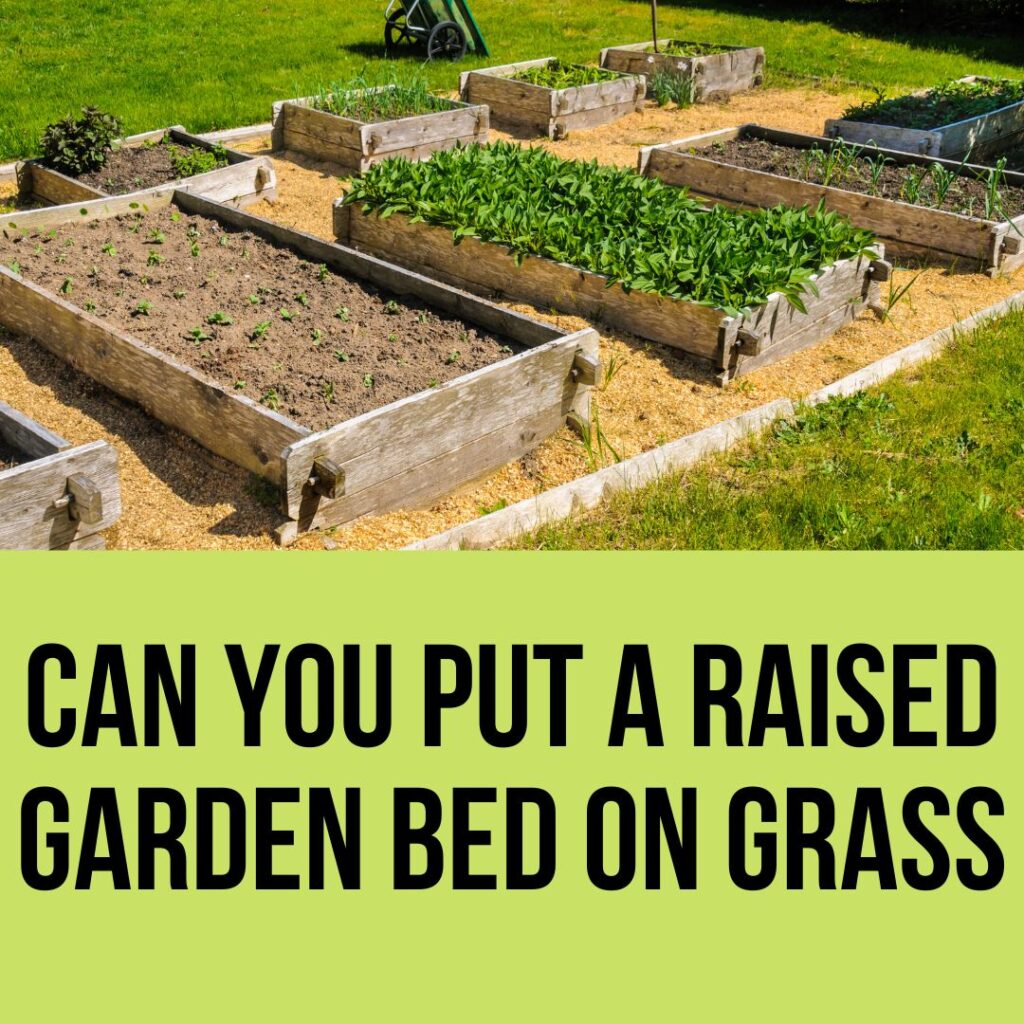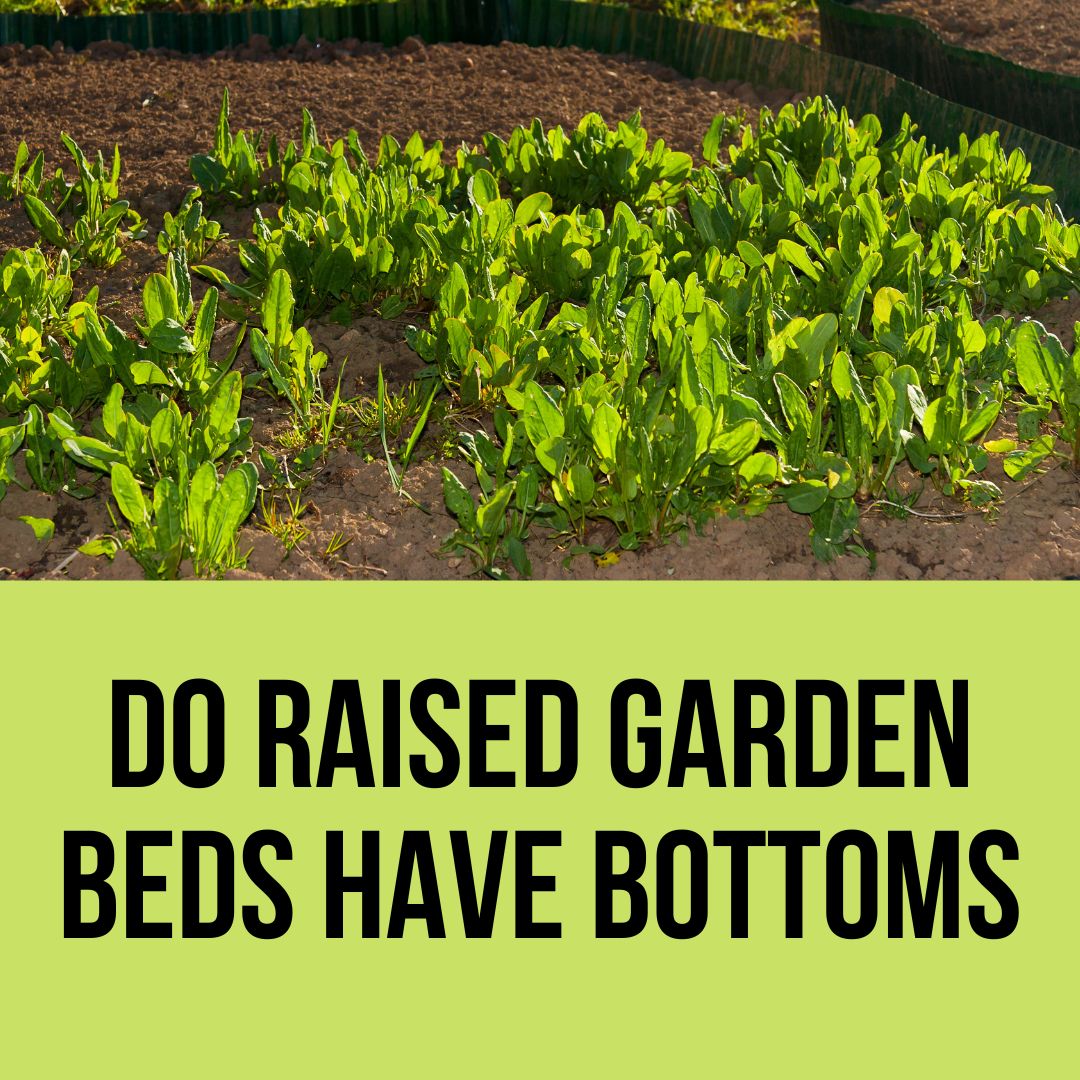There are a lot of gardeners who are curious about whether or not you can place a raised garden bed on grass, and if you can, they want to know what the first step is that you need to do. The process of removing grass before planting in a raised garden bed may be time-consuming and laborious; but, is this step always necessary?
To answer your question, yes, it is possible to place a raised garden bed on grass. You may certainly place a raised garden bed directly on the lawn if you so like. However, you need to take measures to prevent the grass from growing up into the raised bed so that it may continue to be used. One method for doing this is to cover the grass with cardboard or plastic and then build up the soil in your raised bed to a height of at least 12 inches. This will help prevent the grass from growing back.
Naturally, you may also cut the grass away before making your raised garden bed, if you so want. By doing this, the grass will be prevented from creeping up into the raised bed.

Can Raised Garden Beds Be Installed On Lawn?
Indeed, a raised garden bed may be placed on grassland. Under that raised bed, if the earth is stacked high properly, it will suffocate the lawn. If the earth in a raised bed is fully adequate, it will be difficult for grass to emerge thru it.
Nevertheless, if the dirt in your raised garden bed is thin, it may not be capable of killing the grass. In such a circumstance, the grass might climb through into the earth and vie for moisture alongside your seedlings.
You can use two methods to avoid such an occurrence:

- Trim the grass prior to constructing a raised bed
- While constructing your raised bed, you must annihilate the surrounding vegetation.
When constructing a raised garden bed, there are a number of methods for removing grass. They are mentioned below:
- Preparing a Raised Bed Garden: Grass Removal Instructions
Whether you use a shovel or a power tool, clearing the grass from the area where your raised garden bed will be built is a laborious task. However, if you get rid of the grass first, you won’t have to worry about it creeping up into your raised garden bed.
Don’t dig until you’ve called the local utility companies to make sure there aren’t any gas, water, or other lines buried nearby. You should follow this guidance even if you anticipate a light level of digging.
- Remove the Turf
Digging it up and disposing of it is one of the quickest and easiest methods to get rid of the grass. A spade, four stakes, and some twine or rope are the bare minimums for this task. It would also be useful to have a wheelbarrow and a pitchfork.
How to Put A Raised Garden Bed On Grass?
Utilize Mechanical Means
To really get rid of grass without digging, power tools may be used. With the aid of a lawn mower or a spade, you can easily get rid of the trees and bushes that will be in the way of your raised garden bed.
Digging tool (Turf Cutter)
You may get assistance cutting grass by purchasing or renting a sod cutter (turf cutter). A strand of grass, with its stems and dirt, may be plucked from the ground using a piece of special equipment called a sod cutter.
Cultivate with a Tiller (Rototiller)
To further your power tool collection, consider a tiller (or rototiller) for your lawn clearance needs. Tillers may be driven by electricity or gasoline.
Keep in mind that using a tiller will rip the grass out of its root system. Therefore, the lawn cannot be transplanted to another part of the garden.
The grass may be dug up and composted manually, but a tiller can be used instead if you merely desire to do so. When developing a lawn for the first time, a rototiller is an invaluable tool for breaking fresh ground.
Extinguishing Grass: A Guide (Without Chemicals)
There are a few alternatives if you’d prefer to get rid of the grass first before constructing your raised garden bed. None of the following strategies need excavation, chemicals, or heavy machinery to eradicate the grass.
Herbicides of natural substances
If you wish to get rid of the lawn in your yard without resorting to the use of insecticides, any yard enthusiast will appreciate that. There have been some toxic substances in such solutions, and they have the potential to destroy the vegetation that you desire to produce.
You might also try applying a mixture of vinegar on the lawn and spraying it. Whenever use this strategy, exercise extreme caution since the acidity may destroy the grassland, but it may also harm plants that are close. The grass may also be killed by using water that has been brought to a boil.
Wrap in a Plastic Sheet (Solarization)
If you have some extra time, you can kill grass using a mix of solar energy and the greenhouse effect. This method requires some planning ahead of time. This approach calls for some of your time and perseverance, but it doesn’t call for too much effort on your behalf!
Put stones or bricks under the corners and edges of the plastic to make them more weighted down. Because of this, the plastic won’t be able to dislodge itself or be moved about as the wind blows.
After the plastic has been fastened in place in a secure manner, wait anywhere from four to eight weeks. The air and soil underneath the plastic will get warmer as a result of the sun’s rays.
Utilizing the greenhouse effect to your advantage, the plastic will prevent the heat from escaping. Over time, the air and soil underneath the plastic will get hotter as a result of the sun’s radiation. The heat will, in time, cause the grass to wither and die.

Cover with cardboard or old newspapers and smother
To begin, trim the grass to the shortest feasible length. To do this, set the blades of your mower so that they are as close to the ground as they can get. When you mow the grass with the blade set so low, you need to be careful not to run over any pebbles.
After that, place a substantial layer of cardboard or newspaper over the area of grass that you wish to kill. It is more probable that the grass will be killed and that it will not come back if the coating is thicker. On the other hand, the decomposition process will be slower if there is a thick coating.
Utilize a Liner for Raised Garden Beds
You may be able to prevent grass from coming up into your raised garden bed if you use the appropriate liner.
Your raised garden bed may be protected against grass invasion by using a liner that is either made of plastic or landscape fabric. Nevertheless, there are a few drawbacks associated with the use of raised garden bed liners.
For instance, elevated bed liners made of plastic will improve water retention.
Make a Mountain Out of the Soil
Last but not least, you won’t have to be concerned about grass growing through your raised garden bed if you make the dirt mounds in your raised garden bed high enough.
If the earth is heaped up to a height of at least 12 inches (30 cm), then there is little possibility that grass will be able to grow through it.
Thank you for stopping by! Hopefully this article came in help to clear your confusions on the possibilities of Raised Garden Bed. Good luck with your cultivation!
Reference:
